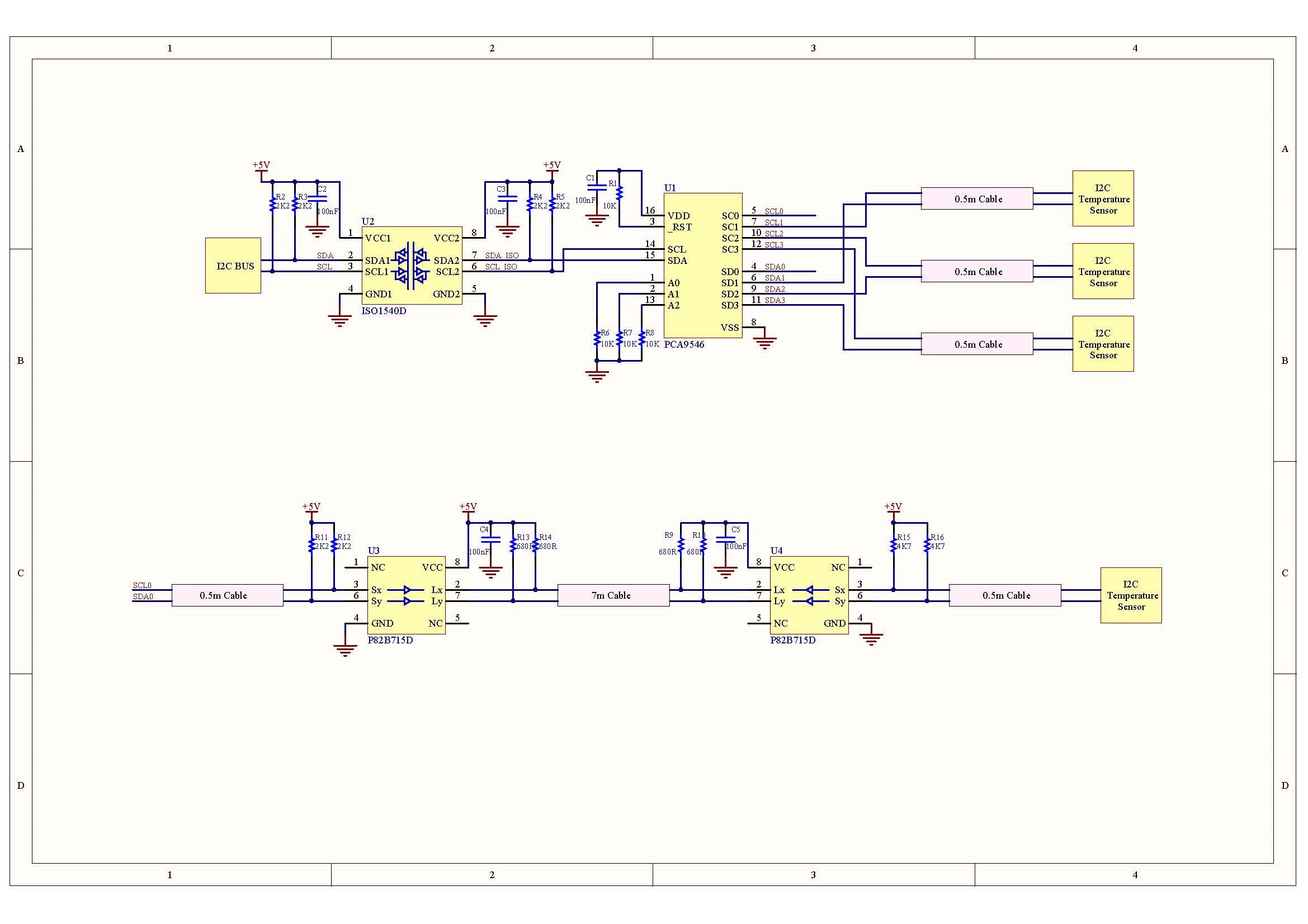Other Parts Discussed in Thread: ISO1540,
Dear all
In my project I use a micro controller to read 4 I2C temperature sensors that have the same address
So I have an ISO1540 to isolate the bus, and a PCA9546 (4 channel switch).
The three sensors are connected through 0.5meter cables and the fourth with a 7 meter.
Because of the cable length the fourth sensor didn't work so I decide to use two P82B715 to extend the bus.
But still can't read data.
Attached you can see the schematic diagram and the signals of the PCA9546 output and sensor input.
Any suggestions?


